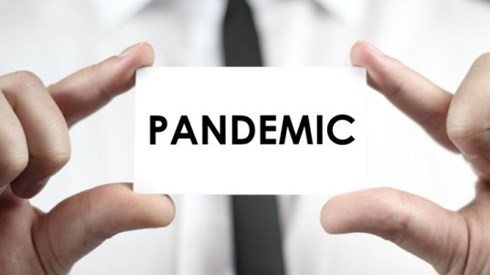Pandemic, Hard Market Showing Captives' Value in Difficult Times

October 14, 2020

Captive insurance companies are responding to the COVID-19 pandemic in ways traditional insurers frequently aren't, according to some experts, an experience that could lead to broader use of captives to address future crises.
"Businesses that have invested in a captive insurance program, that use the captive, and manage their uninsured and underinsured risks in this way, at least for our clients what we're seeing is many of them are in a good place right now," said George Belokas, vice president and actuary at GPW & Associates.
Mr. Belokas and others discussed "Captives and COVID: Coverage Implications Now and for the Future" during the Self-Insurance Institute of America (SIIA) virtual 40th Annual National Conference & Expo.
"Small, medium, and large businesses have suffered and continue to suffer business interruption losses," as a result of the pandemic, Mr. Belokas said. While most traditional market business interruption policies aren't responding to the losses, many captive insurance companies provide regulatory changes coverages that might be. Pandemic-related shutdown orders are qualifying as regulatory changes for purposes of triggering the coverage.
"Regulatory changes policies appear to be providing the most direct coverage for COVID-related losses, but there are some other policies that our captive clients have issued that could provide some indirect coverage," he said.
Trade credit policies written by captives could respond if pandemic closures result in bankruptcies to the captive parent's customers, with the trade credit policy providing some coverage for lost receivables. Supply chain interruption policies might be another indirect coverage available in some captive insurers.
"Captive insurance programs in general can be a lifeline during an unexpected time," Mr. Belokas said. Parent companies that have managed their losses effectively have accumulated surplus in the captive, he said. "I think the available surplus in a captive insurance company can and has served as a lifeline for owners and the businesses they insured," Mr. Belokas said. "A captive insurance company can be an excellent tool to provide that cash when it's needed."
Gary Osborne, vice president at Holman Insurance Services, recalled the example of a casual restaurant chain during the 2008 financial crisis that had been using a captive to fund workers compensation. "They shut it down just to get the cash," he said. "They said, 'We need the money more than we need the coverage.' It's not exactly what a captive is designed for." He said he hasn't seen such cases yet during the COVID-19 crisis.
Mr. Osborne said that while he hasn't seen any captive insurance companies not paying claims during the pandemic, he believes some pools' ability to pay all claims might be limited.
"I don't see captives not paying claims. Some of the pools are potentially having to limit the claims because their aggregate's going to be reached," Mr. Osborne said. "Some of the large captive pools that are out there have so many claims coming in that they could potentially exhaust that loss fund."
Mr. Osborne also said he's seen some captive owners go bankrupt because of the crisis, and the runoff industry is moving quickly to seize opportunities.
"I've already seen some clients go bankrupt. And the runoff industry is definitely all over it," Mr. Osborne said. "A lot of the runoff companies are actually looking at buying the captives, freeing up the money. Because you may have excess surplus in the captive, but can you get at it?"
Mr. Osborne said he has seen interest in writing pandemic coverage in captives. "We've had a lot of people asking about writing policies for COVID, for pandemic coverage going forward, but a lot of them have been put on hold," he said. Those efforts have been tabled until there is a clearer direction for the future, including whether there might be some sort of federal pandemic backstop, he said.
"There's definitely interest in using a captive going forward," Mr. Osborne said. "I think the national approach is going to influence how captives work on this."
The bigger opportunity might be for midsized companies to use micro-captive structures to prepare to finance future black swan risks, Mr. Osborne said.
There's a real opportunity to use the 831(b) structure to accumulate funds in tax-efficient fashion over a period of years, "similar to what I've seen with earthquake and windstorm where you're truly building a risk financing war chest for this kind of black swan event," he said. "Every medium-sized business could certainly take advantage of that and they've got the willingness to do it."
With the combination of the hard market and the COVID-19 pandemic, Mr. Osborne said he's seen some companies interested in making sizable captive insurance commitments to escape the volatility of the traditional insurance market.
He said he's seen clients talk about putting substantial amounts of capital—$40 million or $50 million—into a captive because they want to get a rating for the captive. "These are companies that have committed a lot to loss control, safety. They're going to take the first $1 million, $5 million per occurrence," Mr. Osborne said.
"As an overall trend, I think we're just seeing a great deal more risk taking by the midsize companies," Mr. Osborne said. But, he cautioned, "It's a whole lot different going from $500,000, $1 million per claim to suddenly $5 million per claim." Such a move will demand heightened attention to loss control, safety, and policy wording, he said.
"Coverage wording for captives is usually very friendly," Mr. Osborne said. "You may not want to be that friendly anymore if you're suddenly hitting $5 million."
Ryan Work, vice president of government relations at SIIA, said current traditional market trends coupled with companies using captives to address the pandemic and the hard market might ultimately influence the views of the US Treasury and the Internal Revenue Service (IRS) on captive insurance.
"For owners who had some concerns over how the IRS is looking specifically at 831(b) captives, their ability to mitigate risk within that structure, especially right now, may very well overweigh some of the regulatory concerns that have been ongoing," Mr. Work said.
"Is this going to get the IRS off of our back? No," he said. But it might prompt the IRS to take a more positive look at how captive insurance companies function in the marketplace. "We're going to have captives that have low frequency/high claims that are finally going to be paying out claims because they're mitigating against instances where COVID is coming into play where maybe they've not had a risk in the past 5, 10, 15 years," Mr. Work said.
The regulatory dialog the SIIA and others in the captive insurance industry have been having with the IRS, along with the coverage needs confronting businesses, might create a more positive environment for captives while leading to clear guidance from the IRS and the Treasury, Mr. Work said. "It might actually produce some clarity on what a 'good captive' looks like," he said.
SIIA CEO Mike Ferguson moderated the session.
October 14, 2020



